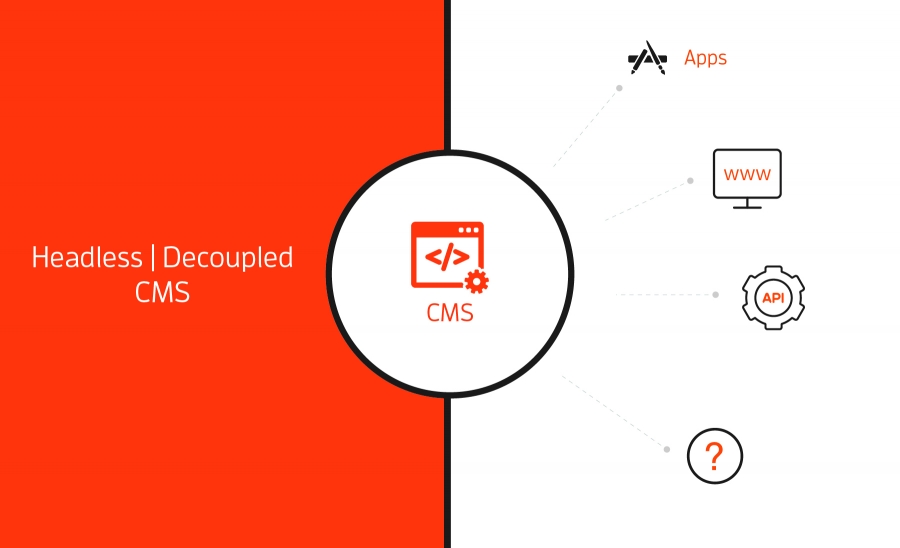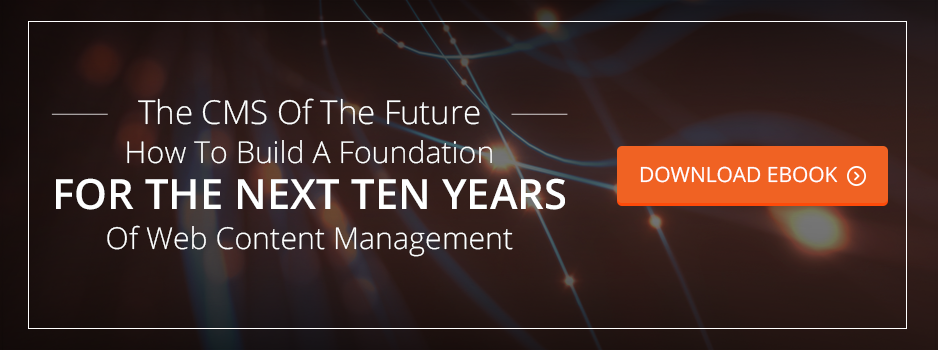Almost every enterprise-level client we’ve seen since starting the NP Group has had instances of multiple domains running different websites, yet sharing some level of commonality. Since 2001, we’ve seen the problem approached many different ways.
We’ve seen complex marketing ecosystems with multiple installations of a CMS, such as duplicative installations of WordPress. We’ve seen a Drupal multisite attempt to accomplish this task, and we’ve unfortunately witnessed other various concoctions we’re too embarrassed to mention (okay, one client was running 6 different domains off of a single WordPress installation, which rendered its incapable of updating).
So what is the best way to accomplish this very common task?
Unfortunately, none of the popular off-the-shelf systems have native support for such a concept. Nearly each of them has cons that outweigh the pros of simply installing them all individually.
And that is a pain point because each individual installation requires updates and maintenance.
Why WordPress Isn’t Really The Answer
Yes, WordPress has multisite capabilities. However, there always seems to be a reason that it won’t work, whether it be security or problems with updating. As an example, you will require certain types of hosting for it to work. If you don’t have access to the root of the server configuration, it could be difficult to get working properly.
Another problem is HTTPS, which is a major SEO ranking factor. Running HTTPS with a multisite installation of WordPress is problematic. Many of the pro-WordPress folks would, at this point, send me to WordPress.com, which is basically a multisite installation of the platform.
I’ll remind them that in that case, the software has been so heavily manipulated to accomplish this task that it’s nowhere near the platform we download and install ourselves. There simply isn’t a reliable methodology for this scenario that we would ever recommend to an enterprise customer, such that their risk would be significantly mitigated.
Why A Headless Or Decoupled CMS Is The Best Option
The best answer today is a headless or decoupled CMS architecture. This philosophy is perfect for multisite installations because you can easily manage multiple domains from a single CMS platform. The only problem is that the choices in terms of decoupled CMSs are limited. There are some SAAS or hosted solutions which are slowly gaining traction.
The large CMS platforms such as WordPress and Drupal are attempting to produce a decoupled capability as well, but in their case, it still is accompanied by all the unnecessary front-end logic and all the other nightmares of those platforms.
Ultimately, a custom decoupled CMS platform is the best way to mitigate ongoing frustration and achieve the desired level of functionality.
In-Depth Examples Of A Use Case For A Multi-Domain Framework
What are possible scenarios where an organization should consider a multisite, headless CMS installation?
Let’s say you manufacture widgets. You have a catalog of widgets that has commonality across three different brand names, which you use to market your products.
A single CMS system could universally power your database of widgets and manage content across the various brand websites from one installation. You can then design unique front end experiences for each brand and utilize that data, or you could create a single theme and change the logos and color schemes based on the domain selected.
In the old world, you’d have to install three instances of WordPress or take your chances with WordPress multisite—provided you met all the requirements. Today, with complete separation of the front end from the back end, you can develop a universal CMS for your company that can last well into the next decade and beyond.
And best of all, you can have greater flexibility with your front-end website experience. Front-end websites, which are based on Drupal or WordPress, will eventually reach some level of limitations due to those platforms.
With a headless CMS installation, you can utilize the ever-changing front-end frameworks and technologies to ensure your user experience is always cutting edge.
Another case study could be if you are a content publisher. If you have multiple channels of distribution, a headless or decoupled CMS could enable you to publish to each of those channels from one platform. This means a single administrative portal could publish to desktop websites, mobile apps, and even other solutions such as Roku or similar, in the case of video.
What It Takes To Bring A Headless CMS Into Fruition
You may be asking yourself why there isn’t more noise about multisite capabilities with headless CMSs. The main reason is that headless CMSs require more development capabilities than most development shops have in their arsenal.
The vast majority of “agencies” popping up all over the world are one-size-fits-all groups that work primarily with one platform. So they may be able to install WordPress, install a theme, and add a logo to it, but a concept such as this is over their heads. They are unable to grasp the concept of developing a CMS to add, edit, and organize content in customized ways.
Additionally, they are unable to design and develop compelling front-end experiences without the crutch of a platform like WordPress. This is why the Internet is becoming a universe of sameness, a medium of highly generic front-end experiences all crafted from the same cookie cutter.
But I digress from the topic of this post.
Getting back to the subject of multi-domain CMS installations, if you are in the cycle of determining what your next framework will be and the future of your company’s Web presence, give a long hard look at headless/decoupled architectures. You’ll guarantee a longer shelf life for your core CMS and have enhanced freedom for front-end creativity while making your administrative life much less stressful.




